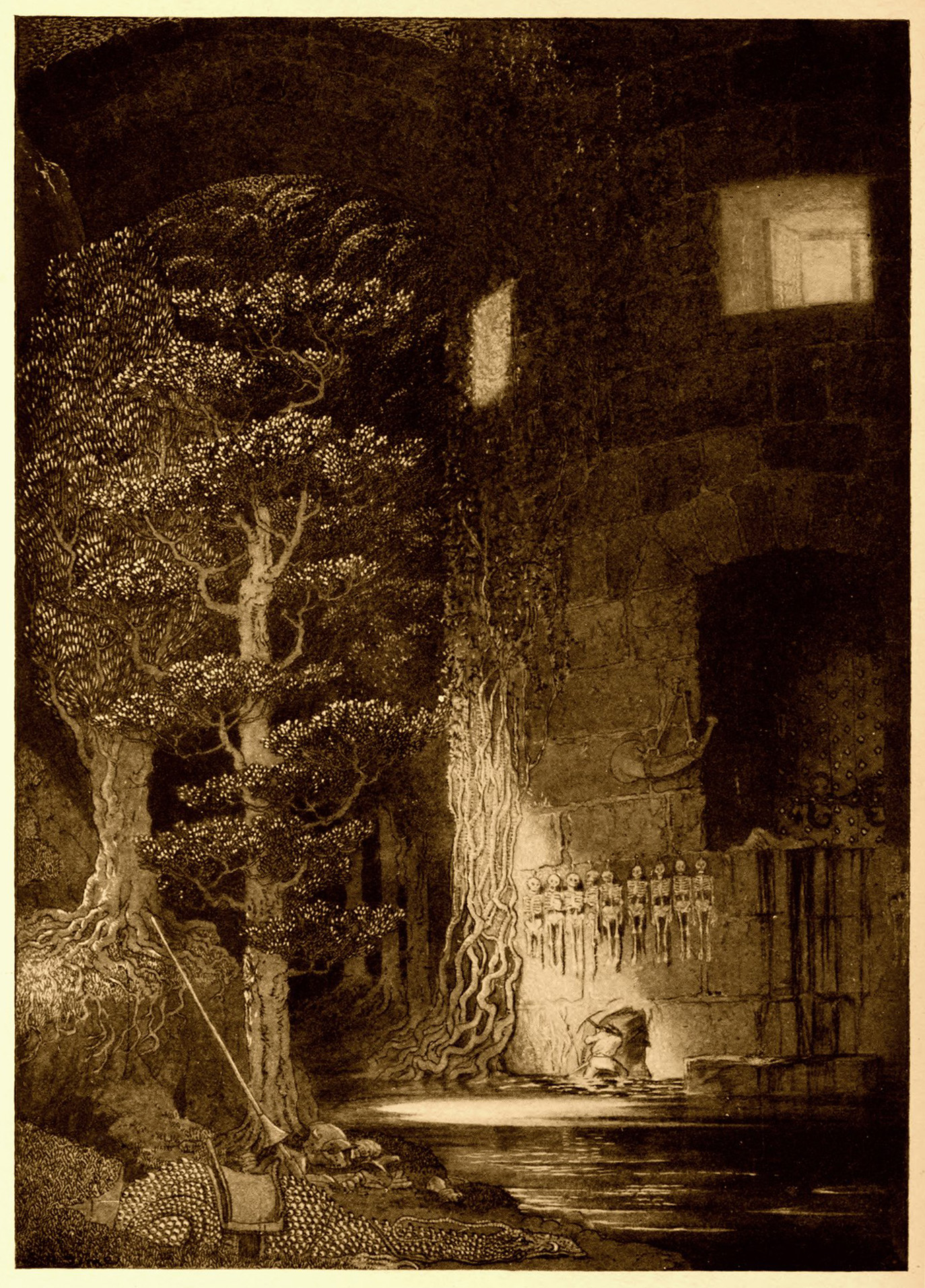This time, I'll explain how I use the same rules for starvation, dehydration, suffocation, exposure, sleep deprivation and all kinds of hazards in my own game (Days of the Damned), and how you can use it in D&D to deal with this hazards without having to check your books.
The rule of three is a mnemonic device for outdoor survival that says one usually cannot live for more than 3 minutes without air, 3 hours without shelter, 3 days without water and 3 weeks without food. It is a very rough estimate and it varies from person to person in real life, but works well for gaming
purposes.
In Days of the Damned, where damage means physical stress, this is quite easy to do: damage from this situations is 5 for the first third of this period, 10 for the second and 15 for the whole period - enough to kill most characters. If the character somehow survives, this keeps going: 20 for the fourth day without water, then 25, and so on.
In D&D, it gets a little trickier. To implement this, you must decide what levels and HPs mean in you game, and if the 20th level wizard should survive starvation better than the 2nd level fighter, among other things.
Or you can just use the method I describe below.
If you assume (like I do in my games), that most 1st level characters should survive a day or two without water, but even a level 12 fighter cannot survive for more than 10 days without drinking, using HPs for this purpose (as Delta suggests for OD&D) might not be the optimal solution, specially in 5e, in which most high level characters are little better than ordinary people in most situations they aren't specialized in, but get lots of HP all the same.
Fortunately, 5e has a system that bypasses HP altogether: exhaustion, which is perfect for our purposes. It also has a different system to deal with skills that improve with level, but less dramatically than HPs: saving throws. Here is the simple rule for 5e:
Characters who spend more than one week without food. one day without water, one hour under extreme weather (heat or cold) without adequate clothing, or one minute without air suffer the effects of exhaustion (see appendix A). After each of this periods, she suffers two levels of exhaustion (but a DC 15 Constitution saving throw will halve this effect).
Exhaustion caused by lack of food or water can’t be removed until the character spends a day eating (or drinking) the full required amount.
This way, every character has a good chance of surviving a bit more than one would expect, specially the ones proficient in Constitutions saves, keeping the "heroic" tone of the game.
BD&D has no "exhaustion" system by default, but you can use something similar: Constitution damage. It affects total hit points and can cause death regardless of level. I would allow a save for half damage in order to let high level characters have a better chance of survival. 1d6 per period works well, but if you want to make it progressively harder to survive, start with 1d4, then 1d6, 1d8, 1d10, 1d12 and 1d20. You can use this pattern if you prefer hit point loss to Constitution loss, too: it will spare most characters in the first period, but even high level characters are unlikely to survive after a while. And you only need one set of dice.
In any case, the recovery rate should depend of the situation. In my games (unlike real life), lack
of air causes no lasting effects if it doesn’t kill
the character, so he could recover in a few minutes, while other kinds of damage could be cured in about one day per level of exhaustion or per period.
But why stop there? As you know, I like using the same rule for multiple purposes, and this is a good example. Here are some additional ways to use it.
Falling damage. Not the rule of three, but just picking up more damage dice for every 10 feet: 1d4 first, than add 1d6, 1d8, 1d10, 1d12 and 1d20. Falling from 50 feet would cause 1d4 + 1d6 + 1d8 +, 1d10 + 1d12 damage. You can cap the damage if you want to give better chances of survival on great falls; maybe 1d4 + 1d6 + 1d8 +, 1d10 + 1d12 plus 1d12 per additional 10 feet, save for half damage. Of course, iy you want to keep 1d6 per 10 feet fallen you can go directly to Con damage... few characters will survive a great fall.
Sleep deprivation. You can use a 3-day pattern for sleep deprivation, but six levels of exhaustion may cause fainting instead of death.
Poison and disease. The "running against time" sensation caused by growing danger can be simulated by this rules, with one difference: if a character survives three periods (minutes, hours, days, weeks, depends on the poison or disease), he starts to heal and gets no further damage. The best part, of course, is watching the characters run desperately for a cure!
So, there you have it. This is the rule I use for antibodies in D&D, if you ever need one!
Update: want to download this rule in PDF form for using in your game? Check this out.
Update: want to download this rule in PDF form for using in your game? Check this out.







